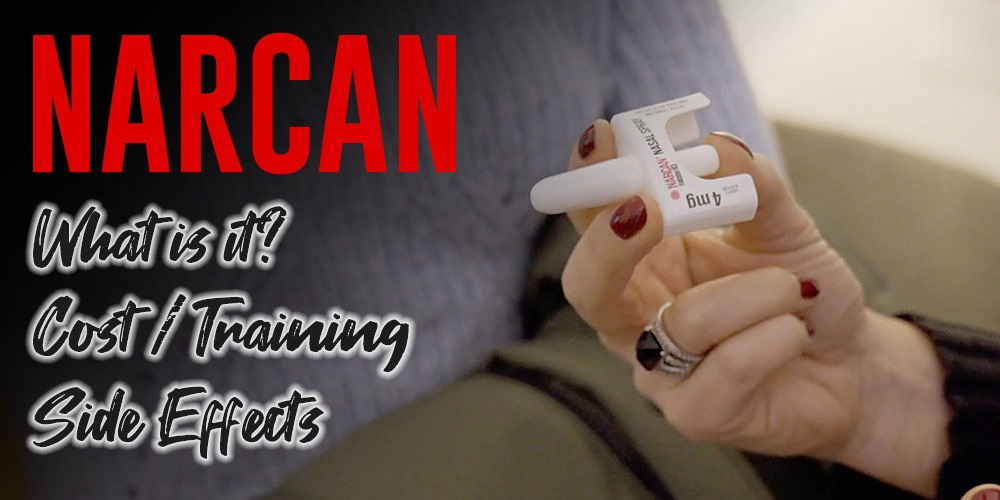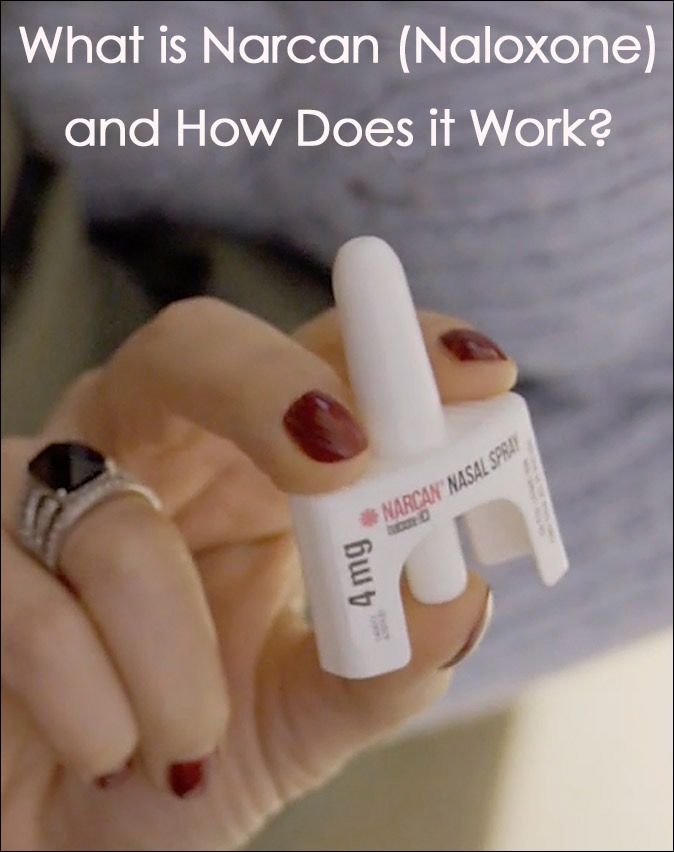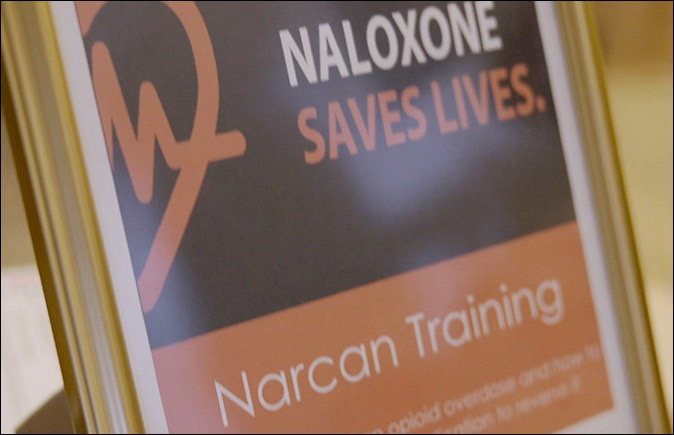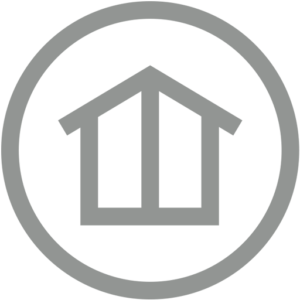
As the saying goes “Knowledge is Power.” Therefore, an understanding of what is Narcan and how it can be used to reverse the negative effects of heroin and opioids is essential for saving lives.
Getting prepared, so that you know exactly how to help a loved one in the event of an overdose is the difference between life and death.
In most cases, Narcan can be used to effectively treat an opioid overdose.
Let’s discuss everything you need to know about Narcan to be prepared for using it in the unfortunate event it is needed, including the history of Narcan, how it works, how to administer it, and the signs of an opioid overdose.
It’s also necessary to examine why the compassionate care model is essential in treating people suffering from substance use disorder, especially heroin and opioids.
From 2000 to 2018, we saw a devastating spike in overdose deaths in the United States and around the world. In the year 2000, the drug overdose death rate was 6.2% per 100,000, compared to 21% per 100,000 in 2018.
Many of these deaths could have been prevented if treated immediately with Narcan.
What is Narcan (Naloxone), and How Does it Work?
Naloxone hydrochloride is commonly sold under the brand name Narcan®.
Narcan is known as an opioid reversal drug, that can be used to reverse the overdose effects of opiates such as heroin, fentanyl, oxycodone, and codeine.
Approximately 81.6% of reported naloxone (Narcan) reversals involved heroin, while just 14.1% involved prescription opioids. It’s unknown how many of these involved fentanyl that was mixed with heroin.
Naloxone works as a rescue remedy for people who have slowed breathing, or even if they’ve stopped breathing altogether due to an opioid overdose.

Narcan is a life-saving medication that blocks opioid signals to the brain, temporarily preventing opioids from re-attaching to µ2 opioid receptors, for approximately 20 to 30 minutes.
In the most simplistic terms, when a heroin or opioid overdose occurs, the brain shuts down breathing and a person becomes unconscious. Narcan unlocks the effects of the opioid on the brain so that breathing can resume.
When the Naloxone does its job, the overdose victim inhales and they quickly wake up, many times unaware of what just happened to them.
If you or someone you care about might be in danger of an opioid overdose, having Narcan on hand could mean the difference between life and death.
Naloxone is also one of the main drugs used for medication assisted treatment.
A Brief History of Narcan
Narcan is the brand name given to the antidote to opioid overdoses – Naloxone. Patented in the early 1960s by Mozes J. Lewenstein, Jack Fishman, and the company Sankyo, the patent ran out in 1985.
In 1971 Naloxone was approved as a treatment for opioid overdoses by the FDA, and in 1983 The World Health Organization (WHO) added Naloxone to its list of essential medicines.
Originally, Naloxone was used intravenously (IV) as an injectable medicine. The need for a more accessible opioid recovery solution gave rise to the first French Naloxone nasal spray in 2016. This is a needle-free alternative to naloxone injections.
Fast forward to 2020 and there’s an increasing demand for “take-home” naloxone (THN) programs, especially in areas that have a high risk of opioid overdoses, such as Montana and North Dakota.
Narcan Nasal Spray
Narcan Nasal Spray is the only FDA approved naloxone HCI nasal spray on the market.
It is used to counteract the effects of legal prescription opioid medications and the illegal use of heroin and other opiates, even in severe overdose cases where consciousness has been lost.
What If You Give Naloxone to Someone Who Doesn’t Need It?
Despite its rapid action in opioid overdoses, Narcan has no effect on non-opioid overdoses due to the fact that it works by blocking µ2 opioid receptors in the brain.
It will not work for a person who has overdosed from Benzodiazepines like Xanax or Valium.
It doesn’t have any adverse effects and should not cause any harm to a person who is not using opioids.
In addition, Narcan is not addictive and it is not used for anything else except to neutralize the effects of an opioid overdose.
Free Narcan for Addicts
Certain medical establishments have been given the go-ahead to offer free emergency Narcan kits to fight possible opioid overdoses. Some counties provide free Narcan kit community training.
Barry County is one area in Michigan that offers prevention education to community members over the age of 18, due to a rise in Fentanyl overdoses.
The Narcan kits are provided by the COPE Network, an organization that focuses on compassionate care and harm reduction for people affected by substance abuse, and their families.
Years ago it was difficult for the general public to get Narcan, as it was only available to medical professionals and first responders. After much legislative debate, getting Narcan is much simpler today.
Narcan is now available over the counter from a pharmacist by asking for Narcan® Nasal Spray. No prescription is needed.
While Narcan Nasal Spray costs approximately $150 for a box of 2 doses, it is sometimes available more cheaply with the help of Medicare Part D or Medicaid, and it’s even completely free in some cases.
The best way to get it for free or at a deep discount is to visit a Narcan training seminar or through harm reduction support groups.
It can also be obtained for free through various community health organizations or by contacting the National Institute on Drug Abuse (NIDA) to find resources in your area.
Understanding Compassionate Care
One of the most effective ways we can overcome the opioid epidemic is through understanding and compassion. By accepting substance use disorder as an illness, we can reach out to those in need. Creating a compassionate community based on empathy and genuine connection is a key to successfully overcoming the problem.
The mission of compassionate care is to enhance the opportunity to recover with understanding. At Oro House Recovery Centers, we view connection as the key tool to motivate people to accept their pathway toward recovery and thriving in sobriety.
Historically, confrontational strategies were used in addiction treatment the world over, especially in America. This approach became widespread in the 20th century and often does more harm than good.
These outdated strategies would often include ridicule, humiliation, and argumentation on the premise that addiction was due to a flawed moral character.
Narcan plays a pivotal role in the compassionate care model. Those suffering from opioid addiction are particularly vulnerable and require care that is based on empathy while respecting the dignity of everyone involved.
Narcan is a rapid response tool paramount in the non-invasive treatment of an opioid overdose.

How To Administer Naloxone
There are currently three available forms of Narcan:
- Single Dose Nasal Spray
- Single-use Injector
- Injectable Naloxone
1. Single Dose Narcan Nasal Spray
Narcan Nasal Spray is the most commonly available form of naloxone and it is easy to use.
Place the first two fingers on the nozzle and the thumb at the bottom of the plunger.
Insert the nozzle into the patient’s nose and press down with the thumb to release the single dose.
2. Narcan Single-use Injector
Naloxone Single-use Injectors are convenient because they can be administered through clothing.
To activate the dose, remove the safety guard and inject the Narcan directly into the thigh or upper arm.
3. Injectable Naloxone / Narcan
Injectable Narcan must be administered by a trained medical professional or first responder and is usually not available to the public for use.
IMPORTANT NOTE: Although Narcan is effective at reversing the effects of an opioid overdose, it’s critical to seek additional medical help after reviving the patient.
Narcan Side Effects of Naloxone
Every drug has side effects and Narcan is no different. Because it can cause rapid detoxification of opioids, it is effective for preventing a fatal overdose and dealing with some temporary symptoms is worth it.
Possible Naloxone Side Effects of Narcan Nasal Spray
- Headaches
- Nasal swelling
- Congestion, inflammation or nasal dryness
- High blood pressure
- Nausea or vomiting
- Stomach cramps or diarrhea
- Tremors
- Rapid heart rate
- Muscle aches
- Flu-like symptoms
Symptoms of an Opioid Overdose Everyone Needs to Know
If you suspect that someone has overdosed on opioids, check for the following symptoms. More than two is a serious cause for concern, and when you’ve taken time to obtain a Narcan kit ahead of time, it could save a life.
Symptoms of an opioid overdose may include:
- Loss of consciousness
- Respiratory depression with breathing that is shallow or completely stopped
- Slow or erratic heartbeat
- Skin, lips, or fingernails that are blue or purple in color
- Not responsive to external stimulus
- Choking or gurgling sounds
- Limp body
- Pale or clammy skin, especially the face
Preparation, education, and compassion are three essential requirements to help a person suffering from a heroin or opioid overdose. Having a Narcan kit on hand will allow for a rapid response to the person’s condition.
Overdose deaths have been on the rise for many years. This can be curbed if we all gain a deeper understanding of substance use disorder, and organize appropriate and timely support for people in need.
Although Naloxone is a great temporary solution, the underlying substance use disorder and possible connected mental illness ultimately need to be addressed.
If you or a loved one are suffering from substance use disorder, please take a moment to reach out. Asking for help is the first step necessary to live a healthy life, free from addictive substances.
Narcan Training
We’d like to thank everyone who attended and participated in the Narcan training event and for making it a success. Here is a quick recap video.
Related Posts
- Long Term Side Effects of Drugs and Addiction
There's a lengthy list of long-term side effects of drugs and addiction that affect both…
- Oxycodone Side Effects and Dependence or Addiction
What is Oxycodone? Oxycodone is an opioid drug, commonly known under the brand names Oxycontin…
- Triple C Side Effects and Abuse
Contrary to common misconceptions, over-the-counter drugs like Triple C are not automatically safe just because…
